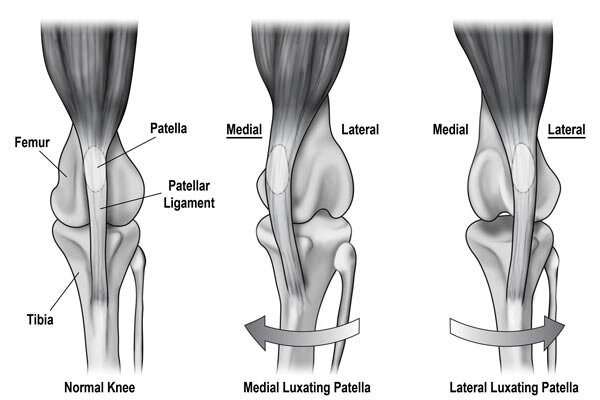Stabilizing the Knee Joint
What does a patellar luxation consist of?
The patella is a small bone at the front of the knee (stifle joint). In people it is referred to as the ‘knee-cap’. It is positioned between the quadriceps muscle and a tendon that attaches to the shin bone (tibia). This is termed the quadriceps mechanism. The patella glides in a groove at the end of the thigh bone (femur) as the knee flexes and extends.
Why does the patella luxate and is it a common injury?
The patella luxates because it is not aligned properly with the underlying groove which is called the trochlea. The result of abnormal movement of the patella causes it to slip out of the groove.
Patellar luxation is most common in certain breeds of dogs, such as Poodles, Yorkshire Terriers, Staffordshire Bull Terriers and Labrador Retrievers. Both knees are sometimes affected. Luxation of the patella due to injury is uncommon.
What are the signs of patellar luxation?
The signs of patellar luxation can be quite variable. Your dog may start experiencing a ‘skipping’ motion with the hind leg being carried for a few steps is typical. This occurs when the patella slips out of the groove and resolves when it goes back in again.
How is patellar luxation diagnosed?
Examination may reveal the atrophy, especially over the front of the thigh muscles. Manipulation of the stifle joint may enable the detection of instability of the patella as it slips in and out of the groove. In some dogs the patella is permanently out of the groove. The severity of the luxation is graded from 1 to 4, with a grade 4 being the most severe.
X-rays will provide additional information, especially regarding the presence and severity of osteoarthritis. Specific views may be necessary to assess the shape of the femur and tibia.

